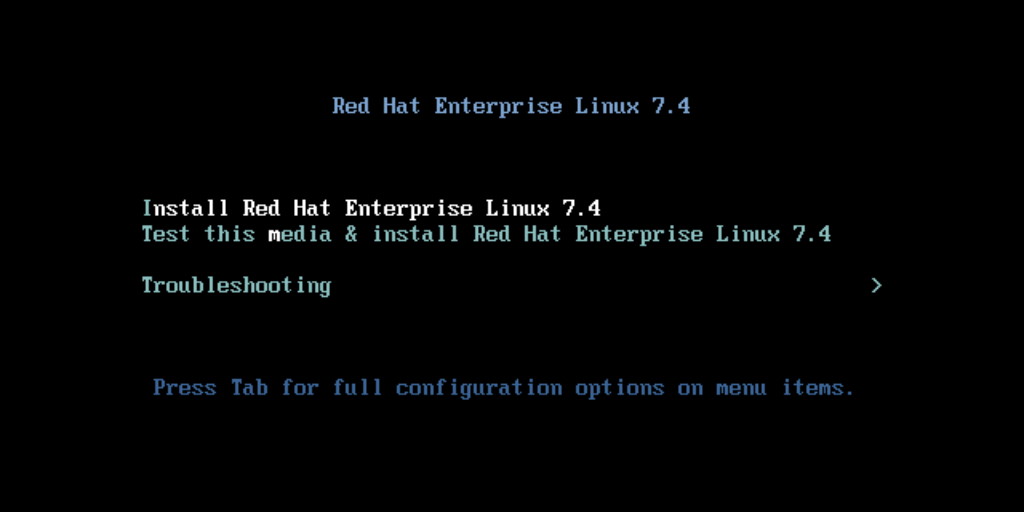In this tutorial, we will guide you through the installation of the latest version of Red Hat Enterprise Linux 7 on a dedicated hardware server, or on a private or public cloud virtual machine using the DVD ISO image or a bootable RHEL USB. Red Hat Linux is a highly stable and renowned Open Source Linux distribution developed by Red Hat. Its reputation as one of the oldest and most popular Linux distributions means support is offered through paid subscriptions.
This latest release of Red Hat Enterprise Linux introduces several bug fixes, package updates, and security enhancements. Noteworthy changes include support enhancements for the 7th generation of Intel Core i3, i5, and i7 processors; the removal of server-side support for the SSH1 protocol from the SSH server; deprecation of outdated cryptographic protocols and algorithms; OpenSSL’s support for DTLS version 1.2 and ALPN; introduction of Network Bound Disk Encryption (NBDE); new Network Manager features (MACsec and GRE kernel support); and support for NFS over RDMA, among other important updates.
The installation process described here uses the RHEL 7 DVD ISO image, which can either be burned to a DVD or transferred to a bootable USB drive. While the primary focus is on installing RHEL 7 on a UEFI-based system, this procedure can also be applied to traditional BIOS systems or UEFI systems with Legacy Mode or CSM (Compatibility Support Module) enabled.
Requirements
- Download the latest Red Hat Enterprise Linux Server ISO for x86_64 architecture from the official RHEL download mirrors. You will need to register on the RHEL Customer Portal to obtain a free evaluation subscription and access the download link. Visit: Red Hat Customer Portal.
- A direct or proxy internet connection on the installation machine is essential for activating the RHEL system, and for subsequent system updates.
Initial Preparations
Once you have downloaded the RHEL 7.4 DVD ISO image from the Red Hat Customer Portal, use a DVD burning application to create a bootable DVD, or use a tool like Rufus under Windows to create a bootable USB drive compatible with UEFI-based motherboards. On Linux, you can use the dd command-line tool to make a bootable USB drive. For non-UEFI systems, other software options for creating bootable USB drives can be found at PendriveLinux.
Prior to installing RHEL 7 on UEFI-based motherboards, access your motherboard’s UEFI settings (by pressing a key such as F2, Del, Esc, depending on the vendor) and disable QuickBoot/FastBoot and Secure Boot options if there are compatibility issues, even though the RHEL bootloader is digitally signed. Refer to your motherboard’s manual for entering BIOS/UEFI settings.
Also, set the boot order in BIOS/EFI to boot from the DVD or USB drive as required. On some machines, you can select the boot drive by pressing a special key during startup.
Install Red Hat Enterprise Linux 7.4 Server
After configuring the aforementioned settings in your machine’s UEFI/BIOS, insert the RHEL 7.4 DVD or bootable USB flash drive and restart your machine. Select the installation media from the boot menu. The first installation image will appear on your screen. Choose “Install Red Hat Enterprise Linux 7.4” and press Enter to begin the installation, as shown in the following image:

After a few moments, the RHEL graphical installer will load into your machine’s RAM, displaying the “Welcome to Red Hat Enterprise Linux 7.4” screen. Choose your preferred language for the installation process and click Continue.
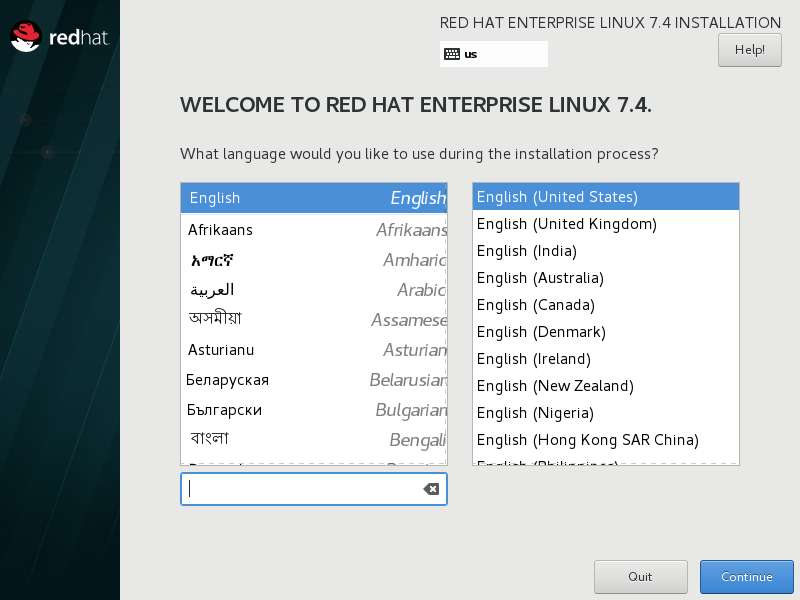
The Installation Summary menu appears next. Click Date and Time to choose your time zone and set the time and date. Once done, click the Done button to return to the main menu.
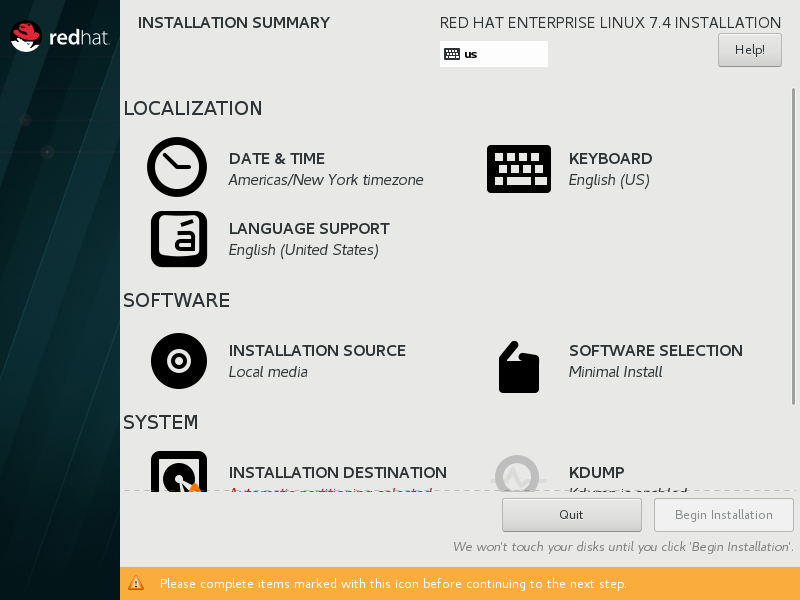

Next, select the Keyboard menu to define your system’s keyboard layout. You can add other layouts by clicking the + button. Once finished, click Done.
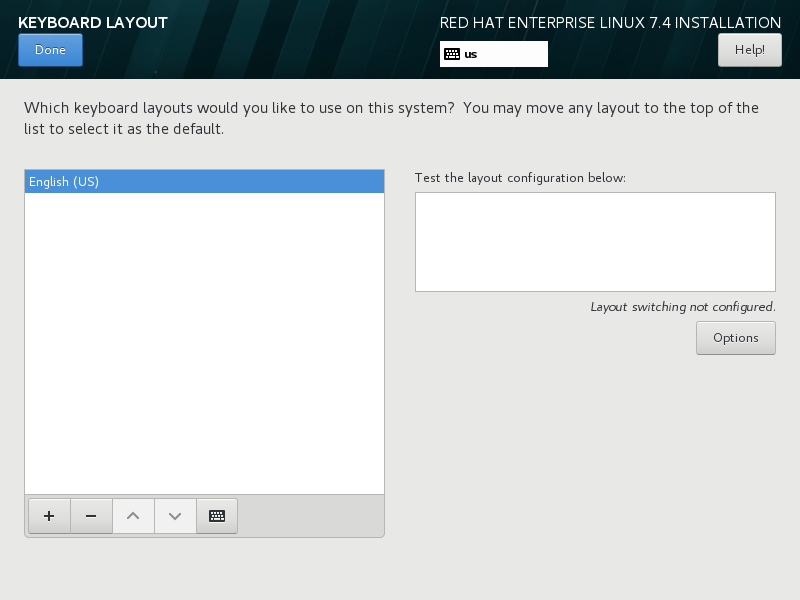
Then, configure your system language by selecting Language Support. Click Done when completed.
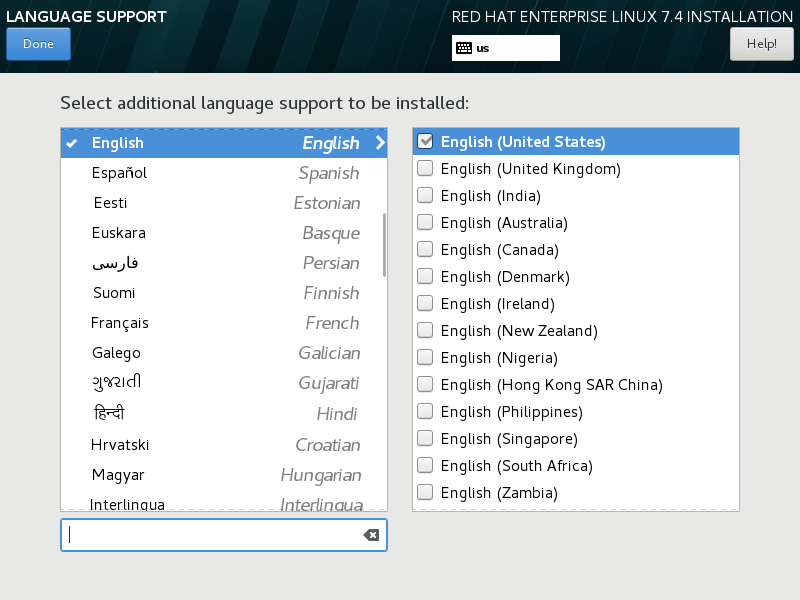
Select Installation Source next and use Auto-detected installation media. Advanced users can choose installation via network options like HTTP, HTTPS, FTP, or NFS, and can add additional repositories. Click Done to proceed.

In the Software Selection menu, you can pick from predefined environments. For versatility and minimal disk usage, select Minimal Install as the base environment, and add Compatibility Libraries. Click Done when ready.
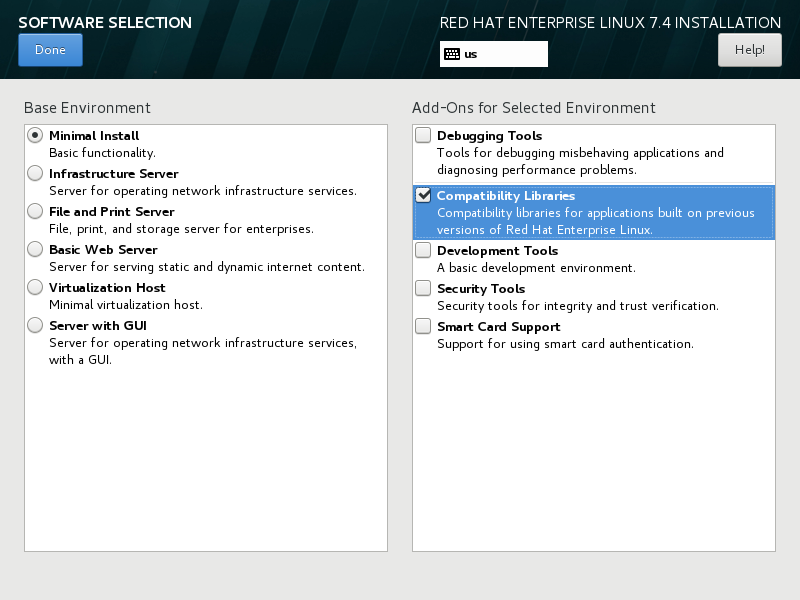
Next, in the Security Policy menu, select a security profile. The Default profile is safe to use. Click Select profile and set Apply security policy to ON, then click Done.
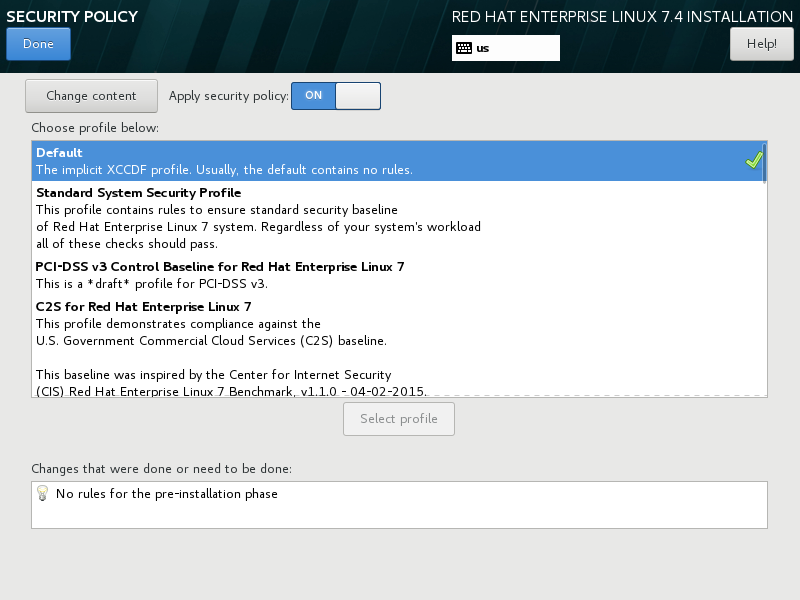
In the Installation Destination menu, select your hard disk and choose Automatically configure partitioning for automatic setup of root, home, and swap partitions. Click Done when finished.
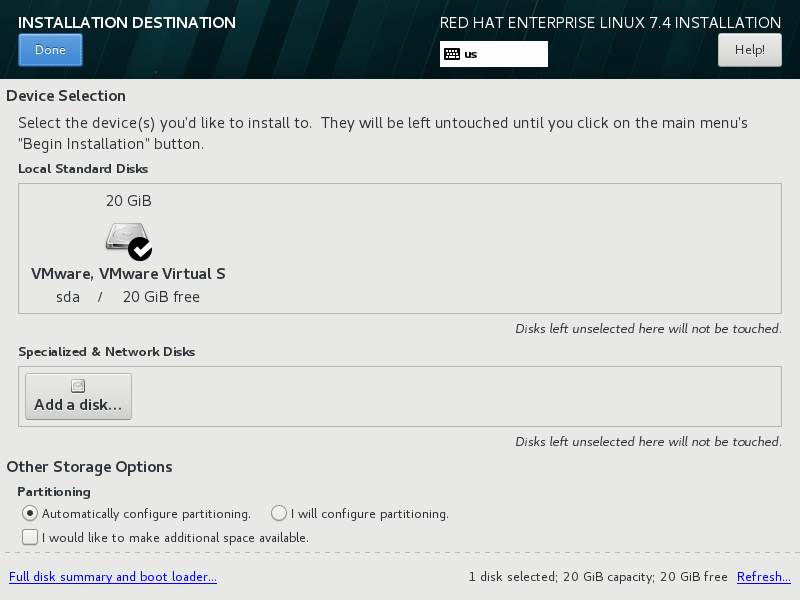
Disable KDUMP kernel crash logging in the KDUMP menu to save RAM, then click Done.
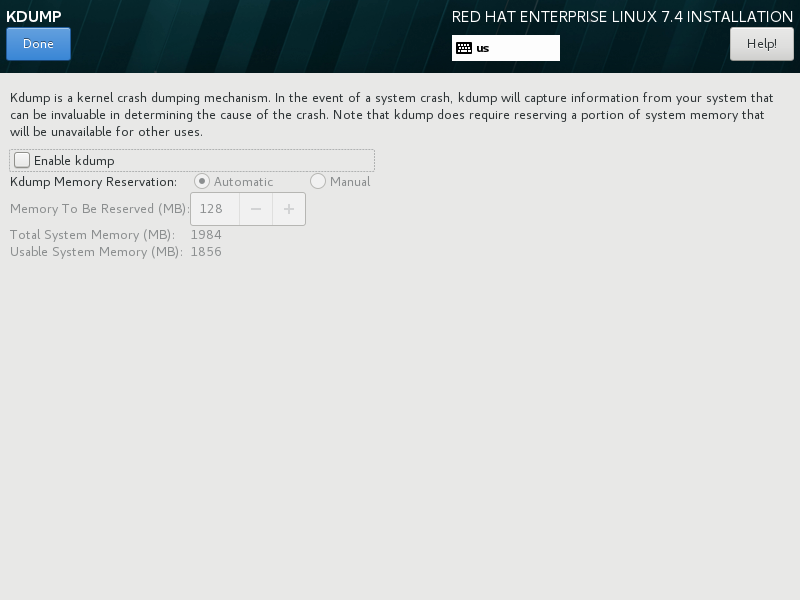
Set up your network and system hostname in the Network & Hostname menu. Enable the network interface and configure it if needed. Click Done afterwards.

Review the configurations before hitting Begin Installation to start installing RHEL 7.
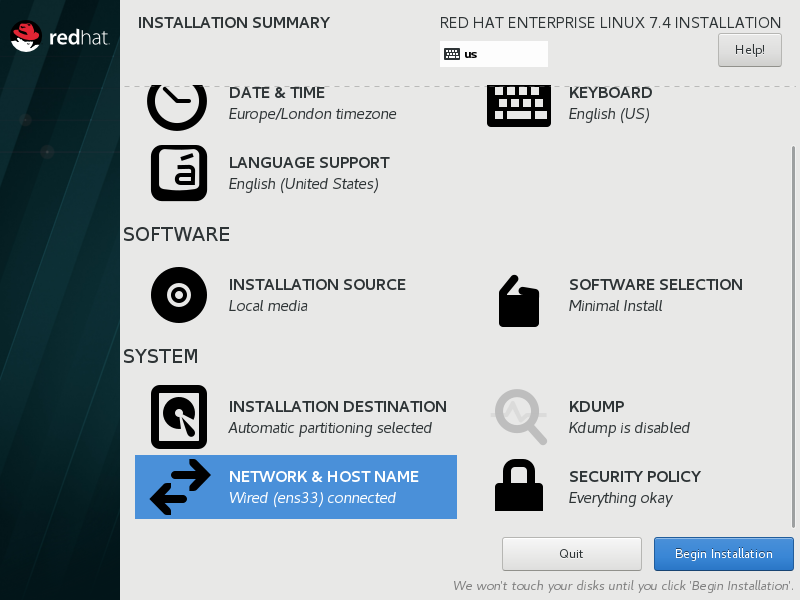
Configure user accounts starting with the ROOT PASSWORD menu. Set a strong root password, then click Done.
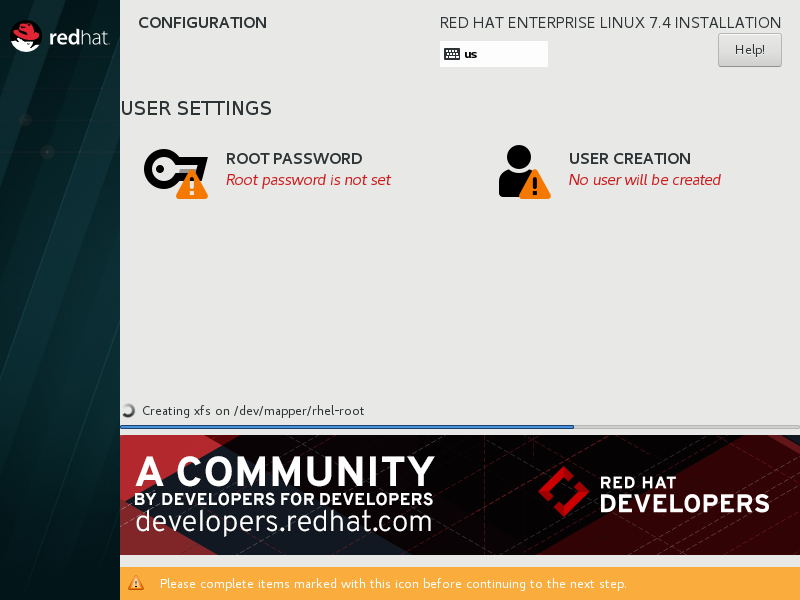
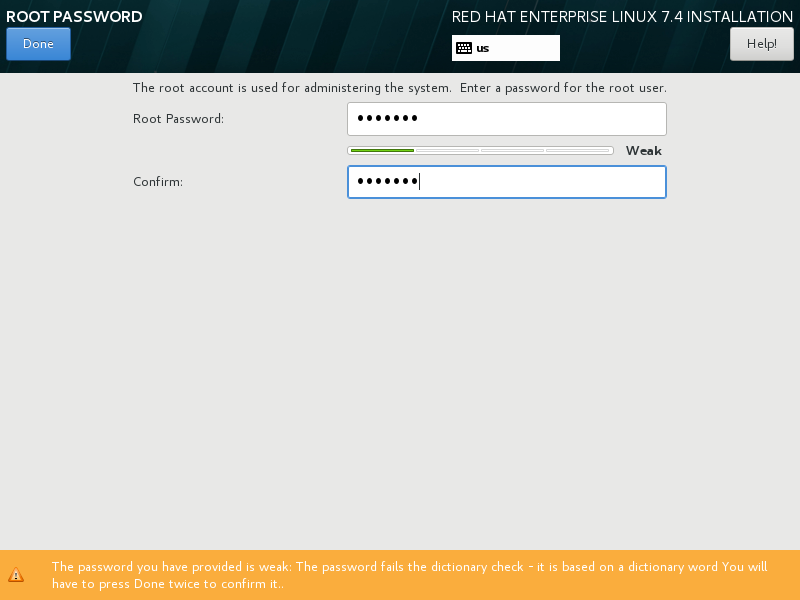
Create a new system user with a strong password under User Creation. Check Make this user administrator and Require a password to use this account for administrative rights. Click Done to continue.
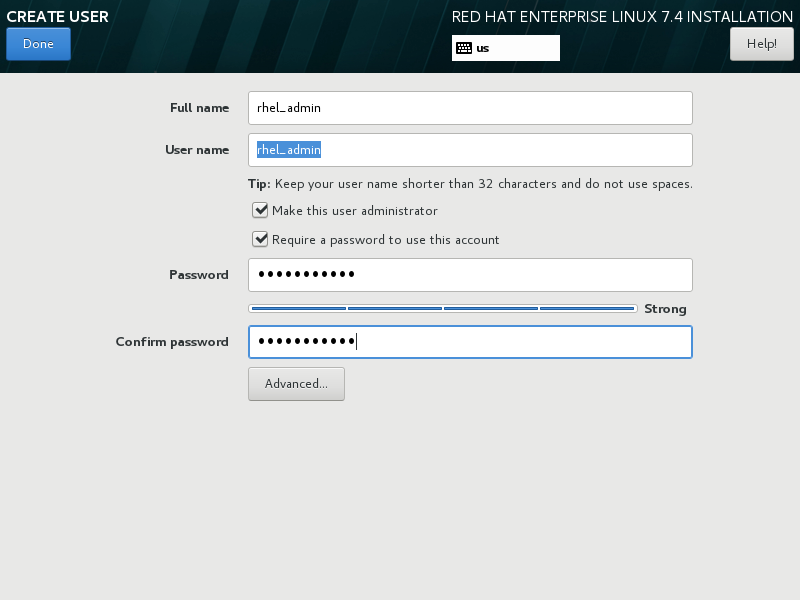
Upon completion, the installer will indicate successful installation. Remove the installation media and reboot your machine.
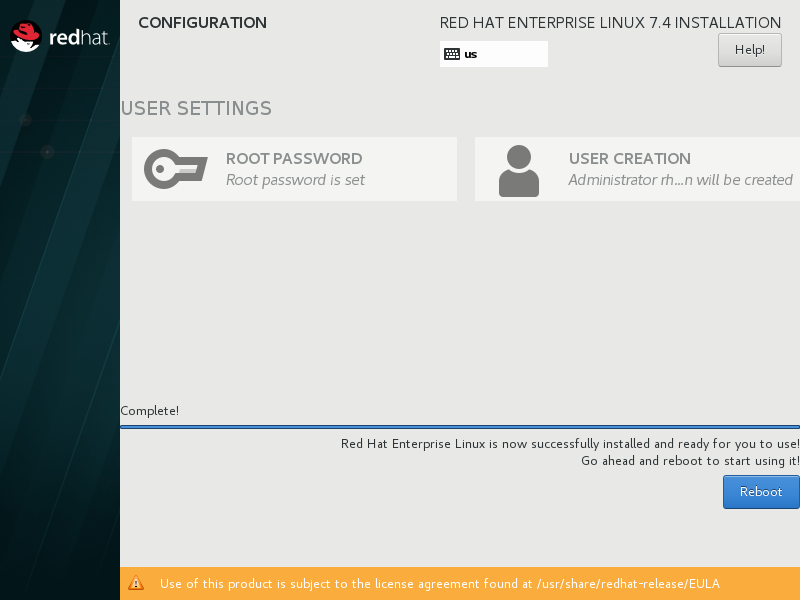
After reboot, log into the RHEL 7.4 console with your configured credentials. To continue using RHEL, register your system and acquire a subscription via the Red Hat Customer Portal. Use the following command to attach your RHEL subscription:
subscription-manager register --auto-attach --username=RHEL_username --password=RHEL_password
Update your system post-registration with:
sudo yum update
Congratulations! You have successfully installed Red Hat Enterprise Linux 7.
FAQ
What are the system requirements for installing RHEL 7?
The minimum recommended requirements are 1GB RAM and 20GB hard disk space. Higher specifications improve performance.
How can I obtain support for RHEL?
Support is accessible through Red Hat’s subscription services. Visit the Red Hat website for more details.
Can RHEL 7 be installed on virtual machines?
Yes, RHEL 7 can be installed on both physical servers and virtual machines.
What if I encounter issues with UEFI settings or Secure Boot?
If issues arise, adjusting the UEFI settings to disable QuickBoot and Secure Boot may help, since the RHEL bootloader is signed for security.
How do I activate and update RHEL 7 post-installation?
Register your system using the subscription-manager register command and update with sudo yum update.
